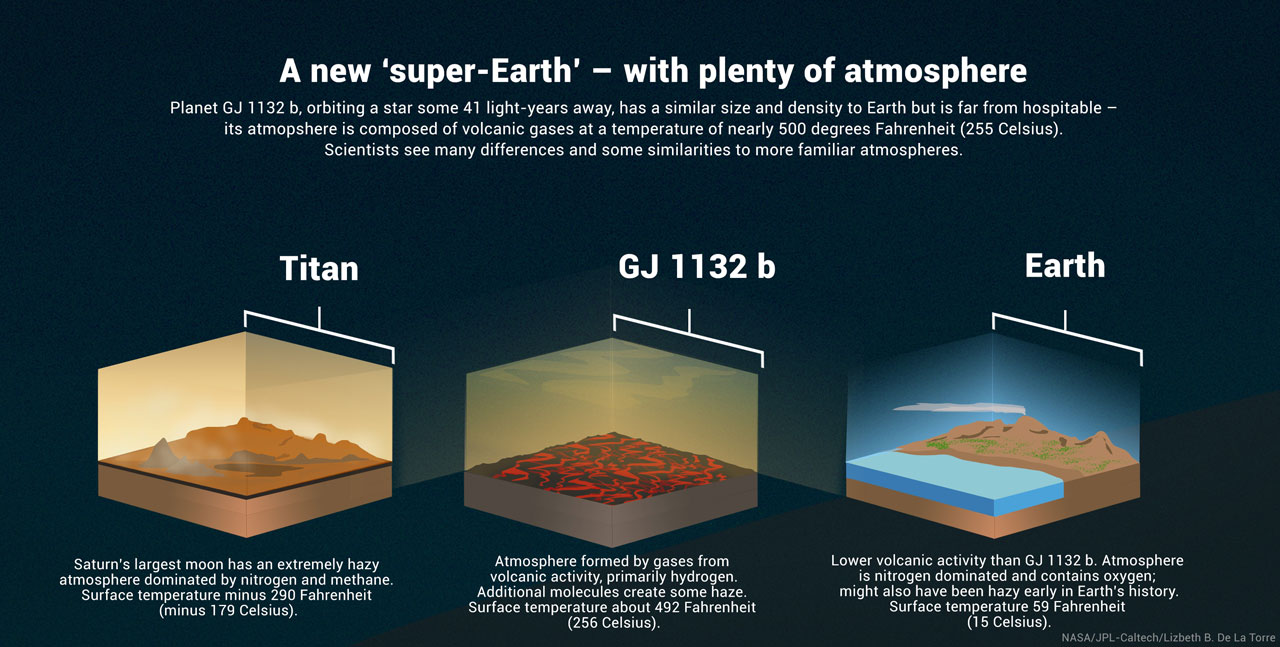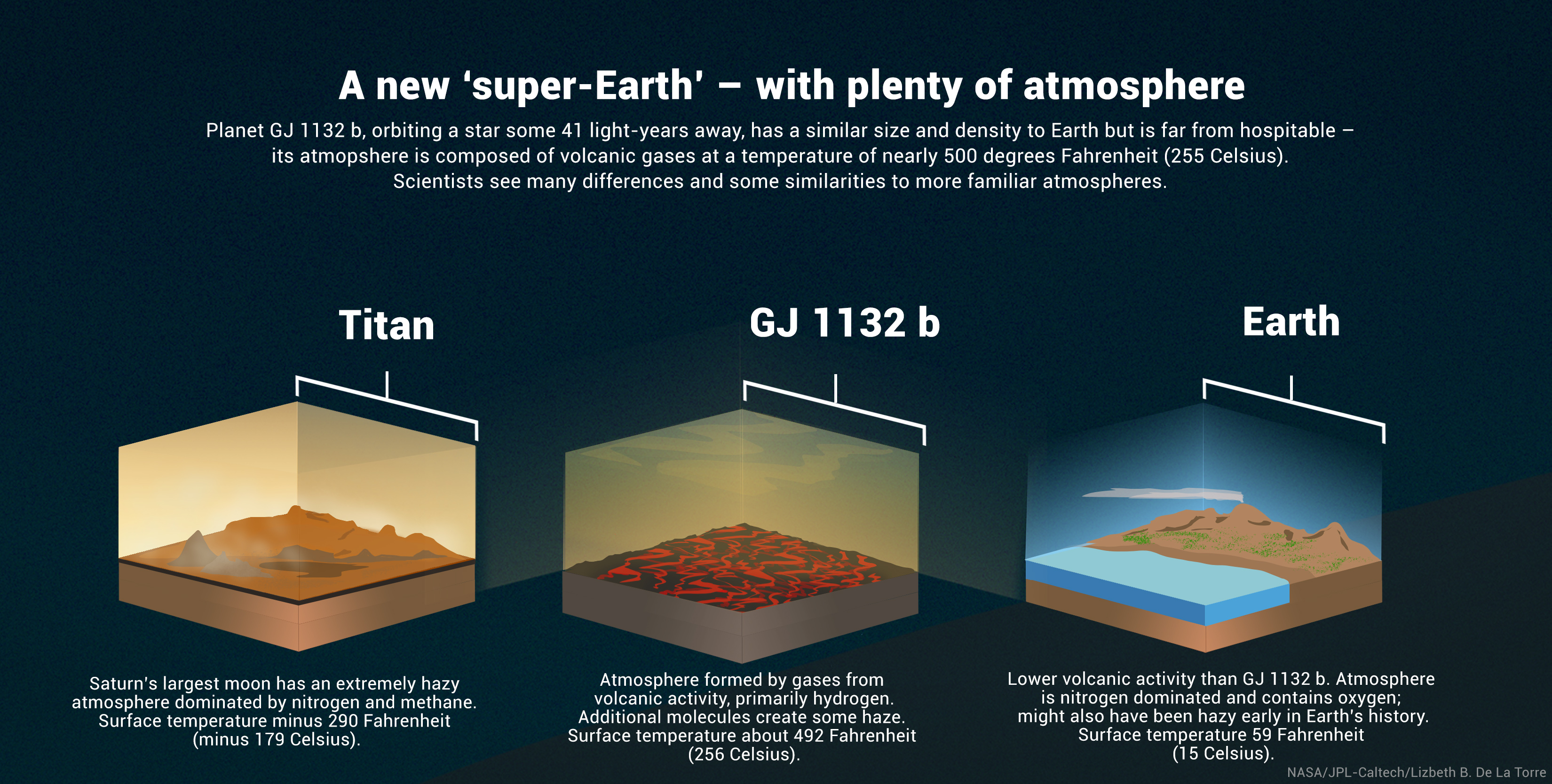A Super-Earth With Plenty of Atmosphere

| Credit | NASA/JPL-Caltech/Lizbeth B. De La Torre |
|---|---|
| Language |
|
A rocky exoplanet GJ 1132 b, similar in size and density to Earth, possesses a hazy atmosphere made up of volcanic gases. Scientists say GJ 1132 b, orbiting a red-dwarf star about 41 light-years away, has some features in common with worlds in our own solar system as well as vast differences. Its hazy appearance might compare to Titan, Saturn’s largest moon, the only solar system moon with a substantial atmosphere – though Titan is much colder. Our own Earth might have had such a hazy appearance early in its history, although unlike Earth, the new planet is far too hot to be habitable. And GJ 1132 b likely has a “secondary atmosphere,” created by volcanic activity after its first hydrogen-helium atmosphere was stripped away by radiation from its star.

